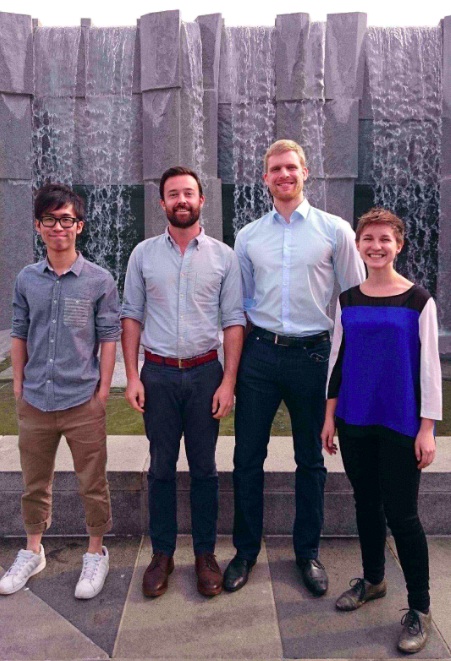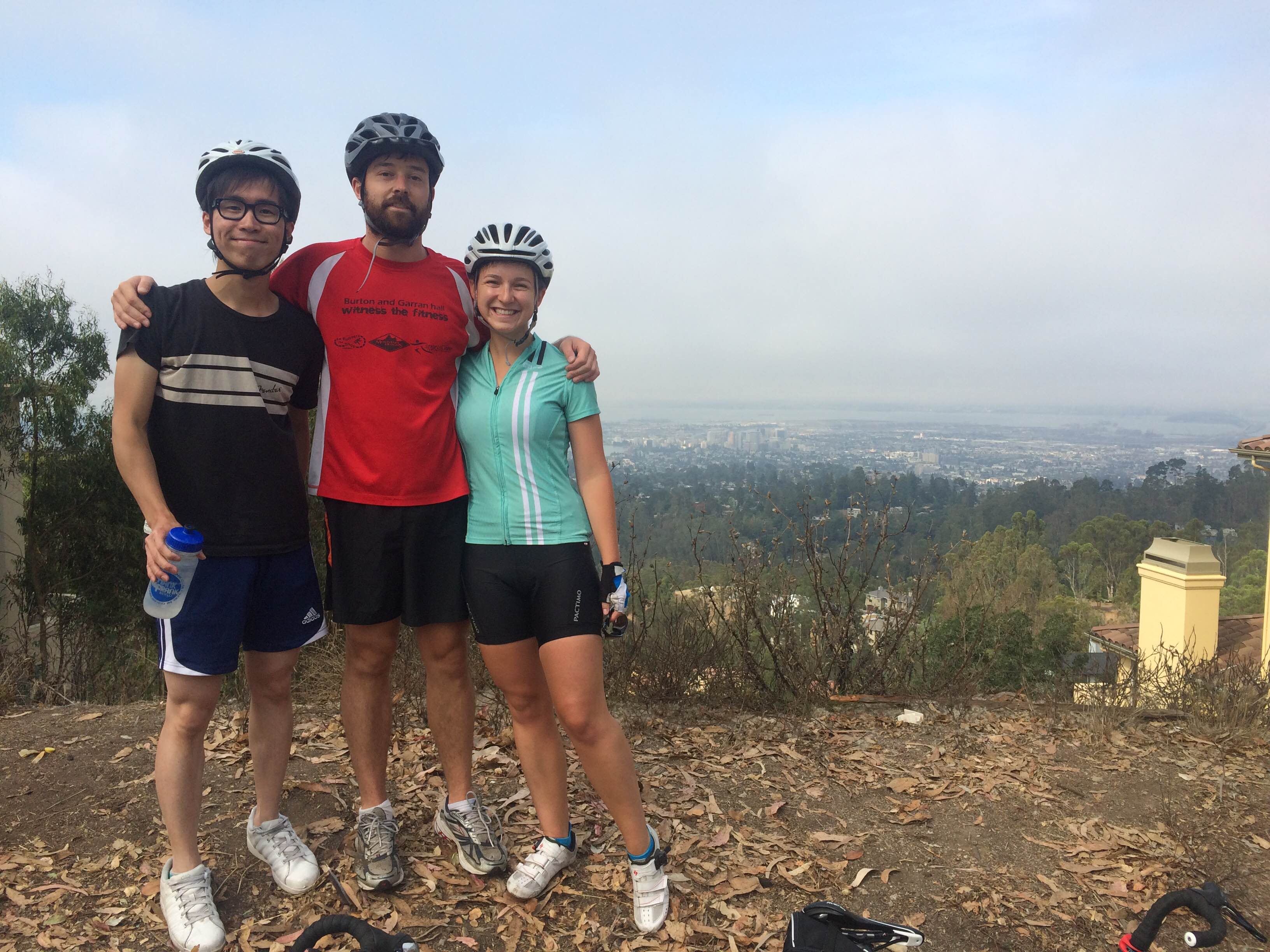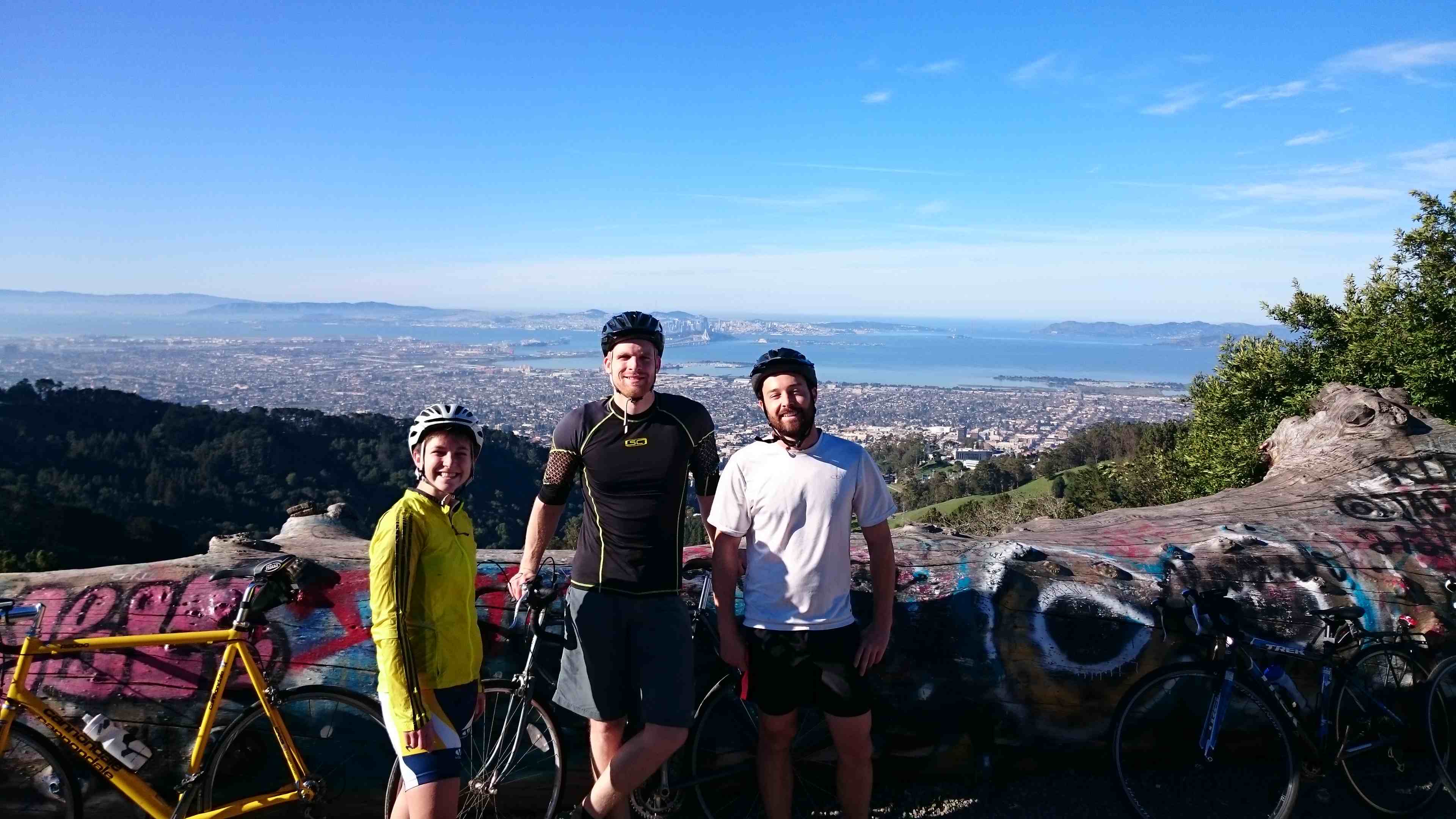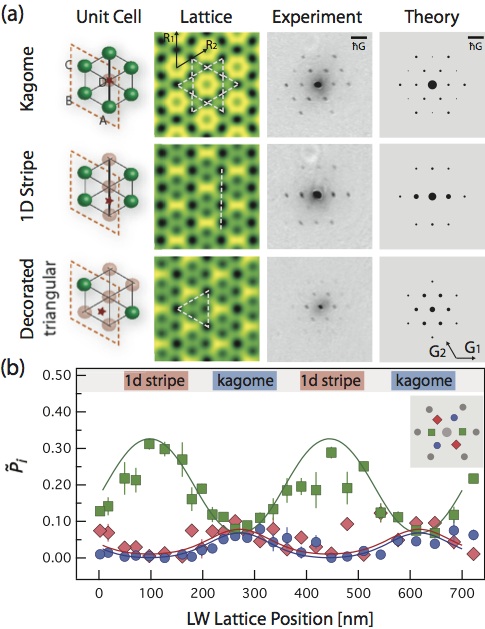Research
- E3: cQED, Optomechanics
- E4: Collective modes
of spinor gases - E5: Optical Kagome Lattice
- E6: cQED, Optical lattice Retired Experiments
- E1: Spinor Rubidium BEC
- E2: Cavity QED
Group Information
- People
- Publications
- Theses
- Presentations
- Research Highlights
- Popular Coverage
- Lab news
- Undergraduate research
Links
- January 2016 MURI Review Meeting
- Useful Links
- Review Papers
- Ultracold Coffee Hour
- Bitbucket: AMO@Berkeley
- Our Old Website
- AMO Seminar (PHYS 290F)
 .  .  . The team:____________________________________________________________________________ E5: A Tunable Optical Kagome LatticeB171 Birge - (510) 643-0543 Overview and MotivationIn a material system, electronic and optical properties arise due to the organization of the atoms in a crystal lattice structure. In E5 we artificially create a crystal lattice structure using interfering laser light. We then expose a Bose-Einstein Condensate to this periodic potential, and watch as the BEC behaves in ways similar to electrons in a solid crystal. This is a tunable and defect-free means of exploring how physical properties arise from crystal lattice structure. We study a two-dimensional tunable optical superlattice with Rb-87 atoms. Our lattice can take on a variety of potential geometries. The most significant is the kagome structure. This lattice geometry gives rise interesting electronic and magnetic properties, but materials with this structure are very difficult to study in the solid state. Materials with this structure have been studied extensively in solid-state physics, but kagome magnets suffer from disorder that complicates the interpretation of experimental results. Our cold atom lattice provides new opportunities to explore the properties of this interesting lattice geometry in a highly controlled environment.  The physics: a tunable optical lattice. The kagome lattice has three sites per unit cell. We create this optical potential landscape by overlaying two commensurate lattices: an attractive 532 nm triangular lattice and a repulsive 1064 nm triangular lattice. We then load a BEC of Rb-87 atoms into the structure that we have created. We can then dynamically control the relative phase of the lattices, leading to a variety of accessible lattice geometries, as illustrated in the figure. (a) shows our accessible optical lattice geometries, in real and reciprocal space. (b) shows populations in the first order diffraction peaks as we scan between a 1D stripe lattice and the kagome geometry.
Current WorkThe second excited energy band of the kagome lattice, which is dispersionless and highly degenerate, may support various exotic many-body quantum states in the cold atom system. We have explored two experimental approaches of populating atoms in higher bands of the kagome superlattice. In the first, we prepare the atoms in a lattice where all atoms occupy a single site within a unit cell, and then dynamically change the geometry so that the occupied site corresponds to a higher energy level within the s-orbital. The populated atoms in higher orbitals can be selectively resolved in band mapping. In the second approach, we modulate the phases of the lattice beams to invert the tunneling energy and thus the band structure.
Previous WorkSpin texture dynamics in a BECUltracold atomic and molecular systems offer a high-fidelity physical realization of many-body quantum Hamiltonians which exhibit a rich array of interesting physics. One can study these atomic or molecular systems far from equilibrium and undergoing long-term coherent dynamics, in contrast with other condensed matter systems whose characteristic timescales are far shorter. This poster describes present activities by our group focused on developing novel tools toward studying quantum magnetism.  Quantum Quench of a Spinor Condensate In E5 we developed an in-situ probe of the vector magnetization profile of an optically-trapped spinor condensate with spatial and temporal resolution. We have studied spontaneously modulated spin textures, symmetry breaking, a quantum phase transition, and the dipolar interactions in this magnetic superfluid. Long-term goals of this work are to advance the understanding of quantum phase transitions, and the role of dipolar interactions, and ultimately move onto studying spinors in optical lattices.
|
| Recent Changes (All) | Edit SideBar | Page last modified on July 31, 2015, at 04:14 PM | Edit Page | Page History |
| Powered by PmWiki | ||

